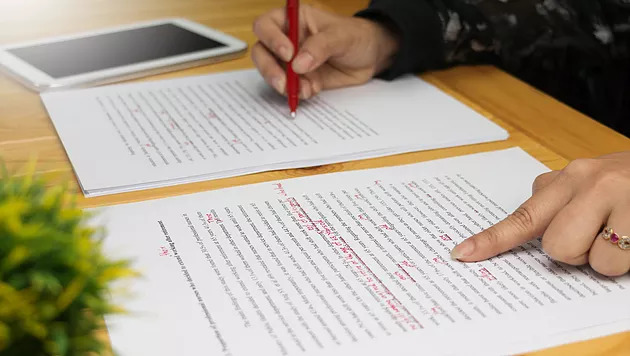What Is Tender Writing?

Tender writing — also known as bid writing — is how businesses win work from government or private sector buyers. It involves preparing structured responses to formal requests such as Requests for Tender (RFTs), Requests for Quote (RFQs), or Expressions of Interest (EOIs), with the goal of securing contracts.
The structure and requirements of each tender depend on the type of request issued, but all successful responses clearly demonstrate your ability to meet the buyer’s needs.
Why Tender Writing Matters
Tendering is a powerful way to grow your business. Winning tenders brings in revenue, opens doors to long-term partnerships, boosts your credibility, and helps you build your brand.
It’s also competitive. Well-researched, clearly written bids that show value for money stand out. But even if a bid isn’t successful, it’s still valuable — each submission deepens your understanding of buyer expectations, market trends, and technical requirements.
High-quality submissions show evaluators that your organisation is capable and committed, laying the groundwork for future opportunities.
What Goes Into a Tender Response?
The content may vary by opportunity, but most tender responses include:
1. Executive Summary
Summarises your understanding of the client’s needs, the value you offer, and why you’re the best fit.
2. Technical Response
Outlines your methodology and directly addresses the requirements. Make sure your solutions align clearly with the tender brief.
3. Experience and Case Studies
Demonstrates your expertise. Include relevant projects, measurable results, and client testimonials to build trust.
4. Pricing and Value for Money
Presents a clear breakdown of costs and explains how your offer delivers value. Highlight any innovation or added benefits.
5. Compliance and Certifications
Shows that you meet all required standards and policies. Rigorous attention to compliance is essential — even small errors can lead to disqualification.
What Makes a Strong Tender?
Strong tenders are more than just answers to questions — they tell a clear, cohesive story about why your business is the right choice.
1. Clear, Tailored Content
Use concise, relevant language. Avoid jargon. Tailor your narrative to the buyer’s goals and criteria.
2. Evidence-Based Claims
Support your statements with real-world proof — past project results, testimonials, data. This builds credibility and trust.
3. Strong Formatting and Structure
Use consistent headings, bullet points, and logical flow. Make your response easy to read — it reflects your professionalism and attention to detail.
How AutogenAI Supports Tender Writing
Tender writing is time-consuming and resource-heavy. It requires research, precision, and persuasive writing — which can be a strain on smaller teams. AutogenAI removes much of that burden.
Built by bid writers for bid writers, AutogenAI is a generative AI platform that streamlines the most time-consuming tasks. It helps teams submit more high-quality tenders, faster.
Here’s how it helps:
- Summarises tender documents quickly and accurately, so you can focus on what matters
- Generates tailored, evidence-based responses using your knowledge base and trusted sources
- Auto-fills repetitive questionnaires to save time and reduce errors
- Builds a compliance matrix in seconds and checks content against requirements as you write
- Polishes your submission by simplifying language, enforcing word limits, and ensuring consistency
- Supports collaboration so teams can work together seamlessly
- Learns from past bids by analysing what worked — and reusing the strongest content in new contexts
These tools free up your team to focus on strategy, differentiation, and technical excellence — the things that win bids.
In independent trials, bid writers using AutogenAI wrote responses four times faster. Clients typically see a 30% increase in win rates, and some have improved by more than 200%. Many also increase their output by 50% or more, simply by freeing up their teams to focus on high-value work.
Your next winning tender starts here. Book a demo with AutogenAI and unlock faster writing, stronger bids, and more wins
Frequently Asked Questions (FAQ)
What is a tender writer?
A tender writer — also called a bid writer — prepares compelling documents in response to invitations to tender. Their goal is to win contract opportunities by clearly demonstrating a business’s ability to meet the buyer’s requirements.
Why should I hire professional tender writers?
Professional tender writers bring specialised writing skills, industry knowledge, and strategic insight. They increase your chances of submitting a successful tender by crafting persuasive and compliant responses that stand out.
What is the tender writing process?
The tender writing process includes:
- Analysing the tender documents and buyer requirements
- Developing a strategy and win themes
- Writing a clear, tailored tender response
- Reviewing for compliance and quality before submission
What are tender documents?
Tender documents include all materials issued by contracting authorities — such as RFTs, RFQs, or EOIs — outlining the scope, requirements, and conditions of the tendering process.
What is a tender submission?
A tender submission is the completed package of documents and responses that a business sends to a buyer in response to an invitation to tender. It typically includes technical, financial, and compliance information.
What does a strong tender bid include?
A strong tender bid includes:
- A compelling executive summary
- A detailed technical proposal
- Demonstrated past performance
- Transparent pricing with value justification
- Full compliance with the buyer’s requirements
What does “understand the tendering process” mean?
To understand the tendering process means being familiar with how buyers advertise contracts, how responses are evaluated, and how to meet the criteria laid out in the tender documents. It includes both strategic and procedural awareness.
How do I submit a tender?
To submit a tender:
- Download and read the tender documents
- Prepare your tender response, addressing every requirement
- Ensure compliance with all criteria
- Submit the full package by the deadline via the specified portal or email
What is a tender response?
A tender response is the structured reply your organisation provides to a formal tender request. It should directly answer each question, align with the buyer’s goals, and present a clear case for awarding the contract to your business.
What are common tender writing challenges?
- Managing time and resources
- Understanding complex buyer requirements
- Producing compelling content
- Avoiding disqualification due to minor errors
AutogenAI helps overcome these challenges by automating repetitive tasks and supporting strategic content development.
How does AutogenAI support tender writing?
AutogenAI improves the tender writing process by:
- Summarising complex documents
- Creating tailored, persuasive content
- Auto-filling repetitive fields
- Ensuring compliance and consistency
- Reusing high-performing content across bids
Can tender writing help grow my business?
Yes. Winning tenders provides consistent revenue, enhances reputation, and builds lasting partnerships. Even unsuccessful bids help improve future performance by deepening your understanding of the tendering process and buyer expectations.


